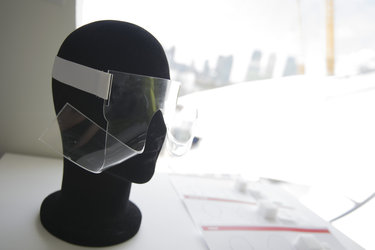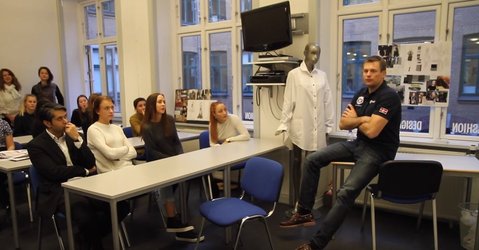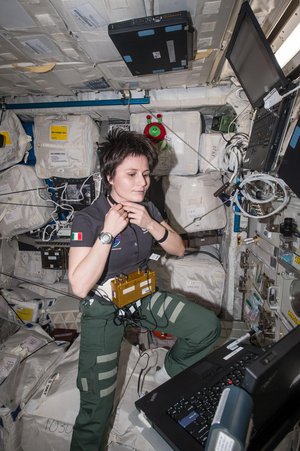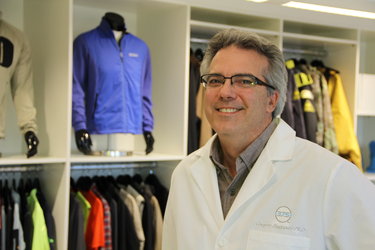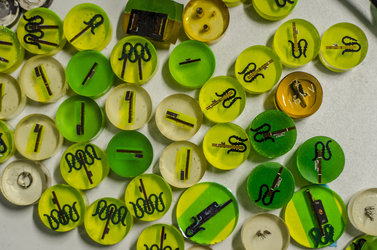Ravensbourne
The Department of Fashion at Ravensbourne is one of five European design schools participating in Couture in Orbit, ESA’s project to look at the future of fashion using space materials and technology. We talked to Associate Dean for Fashion, Caroline Gilbey, for an overview of the school’s role in the event.
Taking part in Couture in Orbit has been a challenging and exciting experience for Ravensbourne students. We had to take a risk on agreeing to participate because all the project briefs were already set when we were approached but we decided to take a risk because it was such a unique opportunity.
We were impressed that so many students agreed to participate in this as an additional project on top of their normal course work. Students were inspired by the presentation about ESA astronaut Tim Peake’s space venture and loved hearing about the technology behind some of the fabrics from the sponsors.

Unlike other projects, the brief was undertaken by students across different courses and levels. UK, European and international students from our school participated in Couture in Orbit and we visited the London Science Museum to tour their Cosmonaut exhibition – the students loved it.
We were invited to join the project quite late so we had to play catch up. Students from four different courses participated: second-year Bachelor’s Fashion, second-year Bachelor’s Fashion Accessory Design, Master’s Fashion and Master’s Wearable Futures.
Alexa Pollman, our senior lecturer for the bachelor’s in Fashion Accessory Design and master’s in Wearable Futures, agreed to be project lead but all the tutors have been involved because it took a lot of organisation to coordinate the fabrics, the selection process and finally the manufacture of the samples.

Our theme was the Tim Peake mission but the students were inspired by the London exhibition on the Russian space programme. They loved being able to look at the astronaut suits through the ages and took reference points from these.
Our sponsors were Sympatex, 37.5, Bionic Yarn, iNanoEnergy and Technical Absorbents. The students were delighted by the quality of the fabrics that they got to work with – many have technical properties as well as being sustainable. Bionic Yarn produce fabrics from recycled plastic water bottles. The fabrics are amazing.
I was delighted with the student response. By the time the selection panel came to Ravensbourne to shortlist the final garments and accessories, some very strong design proposals were coming through. It has been great seeing all the fabrics come together in the final designs in the last few weeks.
We would just like to thank designer Helen Storey for recommending Ravensbourne and Roger Highfield, Director of External Affairs at the Science Museum, for contacting me, and then Rosita Suenson for the enormous amount of work that she put in to coordinating a very challenging project across five Design schools.















 Germany
Germany
 Austria
Austria
 Belgium
Belgium
 Denmark
Denmark
 Spain
Spain
 Estonia
Estonia
 Finland
Finland
 France
France
 Greece
Greece
 Hungary
Hungary
 Ireland
Ireland
 Italy
Italy
 Luxembourg
Luxembourg
 Norway
Norway
 The Netherlands
The Netherlands
 Poland
Poland
 Portugal
Portugal
 Czechia
Czechia
 Romania
Romania
 United Kingdom
United Kingdom
 Slovenia
Slovenia
 Sweden
Sweden
 Switzerland
Switzerland




























